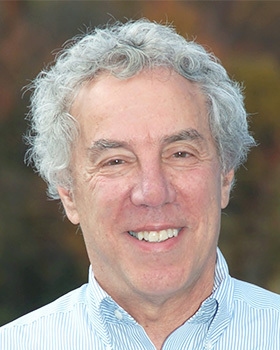An Unexpected Renewable Energy Trend
Over the past three years, numerous news stories have highlighted efforts to roll back state renewable portfolio standards (RPSs), which require electricity suppliers to get an increasing share of their electricity from clean sources. Anti-RPS legislation has been introduced in many states and some state legislatures have held high-profile debates over the merits of retaining their RPS. A few states have weakened or ended an RPS. It would be easy to assume that RPSs, which have fostered renewable energy development in 29 states and the District of Columbia, are in decline.
However, in contrast to this narrative, most of the significant RPS actions that states have taken have been in the opposite direction. New and strengthened RPS laws and regulations will lead to many times more renewable energy generation than will be eliminated by RPS-weakening legislation.
The state of Kansas took the last major anti-RPS action in May 2015, when it switched from an RPS mandate to a non-binding goal. But that same month, Hawaii and Vermont committed to dramatically expand renewable generation through an RPS. The Hawaii legislature overwhelmingly passed a bill increasing the state’s mandate to 30 percent in 2020, 70 percent in 2040, and 100 percent in 2045.
This made Hawaii the first state with a 100 percent RPS and turned it into a primary testbed for figuring out how to safely and reliably integrate very high proportions of intermittent generation and distributed energy resources, especially solar, into a utility grid.
Vermont had been the only state in New England without an RPS. Its new Renewable Energy Standard requires utilities to get 75 percent of their electricity from renewables by 2032. Much of it will come from Canadian hydro, which is already a major energy source for the state. The standard will also lead to the development of more than 400 megawatts of distributed renewables, a large amount for a small state.
In October 2015, California Governor Jerry Brown signed a law requiring that state to get half of its electricity from zero-carbon renewable sources by 2030, a goal he had set out earlier in his annual State-of-the-State speech. The legislation also included interim targets of 40 percent by 2024 and 45 percent by 2027. The legislature felt comfortable adopting these ambitious goals, because the state’s utilities had easily met a 2013 target and were on track for meeting existing targets of 25 percent in 2016 and 33 percent in 2020.
Then, in December, New York Governor Andrew Cuomo directed the Department of Public Service to develop a Clean Energy Standard mandating that 50 percent of the electricity consumed in the state come from renewable energy in 2030. This goal had appeared in a 2015 State Energy Plan that was released in the summer, but the Governor’s directive began to move it into regulations.
According to the Public Service Commission staff, the standard will require the addition of 33,700 gigawatt-hours of new renewable generation by 2030. The staff issued a white paper with proposals for how to achieve the Clean Energy Standard and is advancing towards implementation.
Finally, on March 11, 2016, Oregon Governor Kate Brown signed legislation that will effectively eliminate coal from the electricity supply of the state’s major utilities by 2030. The law also increases the Oregon RPS from a pre-existing 25 percent by 2025 to 50 percent by 2040, with interim goals along the way, starting in 2025 with 27 percent. This legislation emerged out of discussions between the state’s environmental advocacy organizations and two largest utilities, which sought to avoid a proposed ballot measure that would have required even more dramatic action.
Of course, California, Hawaii, New York, Oregon, and Vermont have different demographics, economies, and politics than much of the rest of the country. But it is still impressive and noteworthy that states representing 20 percent of the nation’s population have made such significant new commitments to expand their use of renewable energy. They have shown confidence that an electricity system can rely primarily on renewables.
It is too soon to know how widespread the RPS strengthening trend will be, but there are already some positive signs. Last week, for example, the Maryland General Assembly approved legislation requiring a 40 percent reduction in economy-wide greenhouse gas emissions below 2006 levels by 2030. If Governor Larry Hogan signs it, it could very well lead to increasing the state’s RPS.
On the other hand, there is a possibility that some RPSs will sunset. Five states—Iowa, Michigan, Montana, Texas, and Wisconsin—have already reached their maximum RPS target. Eleven more states will reach theirs by 2021. Those RPSs will need additional targets and deadlines if they are to continue to motivate additional renewable energy development after that.
Although opponents of renewables have failed to roll back RPSs in most places where they have tried because the policies are popular with voters, they may have an easier time blocking RPS increases.
Although the future is necessarily uncertain, the actions of five states since last May have already given renewable portfolio standards more momentum and staying power than earlier news stories about rollbacks had implied. They show that the desire for more renewable energy generation remains strong.
***
This article was originally published in Morning Consult. Read the original article here.
Published On
March 23, 2016

